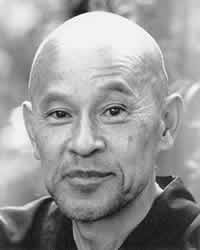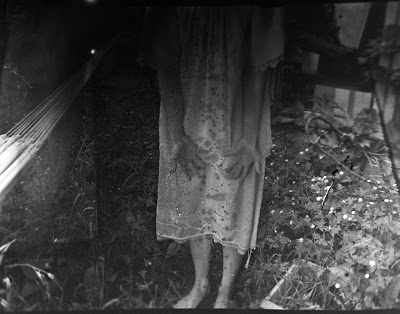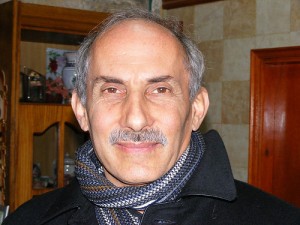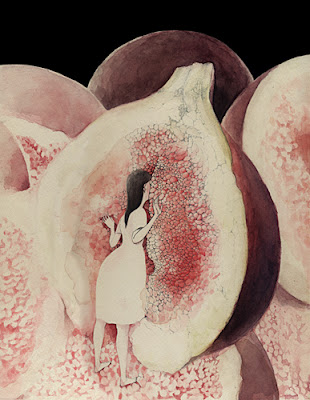(5 Day Intensive at Centre of Gravity, 180 Sudbury Street, Toronto, September 25-29, 2011. Talks by Michael Stone, notes by MH (with errancies, mishearings, conjectures. This is talk 3 of 5 on a Chinese poem (often chanted in Zen monasteries) called Sandokai written in the 1st century, strained through Suzuki’s commentary in Branching Streams Flow in the Darkness.)
Beginner’s Mind
The Heart Sutra reads: So set forth the Prajna Paramita mantra, Set forth this mantra…” Set forth is rhymed not once but twice. This Sutra isn’t only something that comes out of your mouth, out of the whole body of your mouth, but it’s something that needs to be set forth. A task to be accomplished. How can you take what we’re doing this week and set it forth? Perhaps one of the guidelines could be stated this way: to show up, to see what’s happening free of the school you belong to, free of your age, the street you live on, or your gender. Of course your history resides in whatever you do – but how can you be free of what you think of as your age and gender? To take your ideas about yourself and put them in brackets so you can see them. Shunryu Suzuki calls this beginner’s mind.
Suzuki was going to visit the Zen Centre in Cambridge to give a talk, and owing to a communication mix up he arrived a day early. When he got there he found the monks busily sweeping and cleaning in preparation for his arrival and the big presentation tomorrow. So he rolled up his sleeves and pitched in, and when he was asked what he was doing he replied, “I am preparing for the big presentation tomorrow.”

Suzuki: “In the beginner’s mind there are many possibilities, expert’s mind has only a few.”
Bertolt Brecht wrote, in his poem “The Necessity of Propaganda,” “Even the hungry must admit that the Minister of Nutrition gives a good speech.”
Sendokai: “All the objects of the senses interact and yet do not. Interacting brings involvement. Otherwise, each keeps its place.” Maybe Portugal won’t exist in ten years. Maybe all those debt ridden countries in Europe will simply dissolve and become a large bank account.
Here Sekito is urging us to remember the oneness in everything we do. When you chant you might take it so personally – how am I saying this difficult word? Am I too fast or too slow? But it’s important to feel the group, the interdependence of this sound, as it comes out of a place that is you and not you. Returning to oneness is returning to a feeling of being alive. That feeling is what makes us all do – it makes us the same. You’re not a rock, even if they call you stone head.
Sense Gates
Our sense organs are like gates. The eyes can go after things, but they can also receive. Western science has this idea that consciousness (that resides in a place that cannot be named) is at work all the time, and because of it we can become aware. Buddhist psychology goes after big and permanent ideas like this and takes them apart. Buddhism isn’t really a science or a psychology, it’s not interested in questions like: What is God? Instead it’s more existential and phenomenological: how do you experience the world? We all have six senses: hearing, seeing, smelling, touching, tasting, and thinking. And we have six sense organs: ear, eye, nose, skin, tongue, bodymind. In the same way that the ear can hear sounds coming and going, the mind can regard thoughts coming and going. If you’re just watching thoughts arising and passing away you can recognize that there is no thinker. Your mind/body is these six gates – there is no central command or hidden control tower. You don’t think all your own thoughts. Neuroscience has shown us that our brain is not our mind. Who can say where the limits of the mind are? The mind is everywhere and nowhere.

There are six different kinds of consciousness: when the sense organ of the ear makes contact with a sound (sense object) it produces sound consciousness or hearing. When the sense organ of the eye makes contact with a form (sense object) it produces seeing consciousness.
In each moment, consciousness is dependent on the meeting of a sense organ and a sense object. Our experience is so interdependent that there is no possibility of separating us from the world. A sense organ and object co-arise – nothing is born by itself. Hearing is a process, it’s not a thing. When you hear a sound you can’t tell where it starts or ends. The sound is not inside and not outside. That’s why in The Heart Sutra we chant that there is “no eye, no ear, no nose, no tongue, no body, and no mind; no colour, no sound, no smell, no taste, no touch, and no phenomena…”
If you said, “This isn’t a wall,” the contractor would say, “It’s holding up the ceiling, what are you talking about?” But if you took an electron microscope and tried to find the dividing line between wall and ceiling you couldn’t, because they’re so interdependent.
As you hear a sound it is disappearing into no-thing. Nothing is not nothing, it’s everything and it’s not a thing. This is emptiness. Emptiness is empty of thingness.
When you feel pain it’s so usual to say, “I’m in pain,” and this naming adds to the pain. Can you open to the moment of sensation and not treat it as me and mine? You can use the breath to have a relationship with pain, so that you’re not clinging to stories or views. When I experience pain I start complaining about it, and that’s a way of covering over the sensation with words. It’s OK to attach to the pain, but not to the ideas of pain.
At a recent retreat Jack Kornfield began to nod and then finally fell over and collapsed. As soon as he revived he began doing a body scan until the ambulance came to get him. He muttered, “I feel tension in the lower knee…” instead of allowing proliferating thoughts like, “Oh, I’m dying…” in the crunch his practice really came through for him.
When you hear a sound you meet it as if you’re blindfolded. We didn’t do the blindfold exercise in order to pretend we were blind, we’re doing it in order to see. When you can open to the field without naming it – then the world is shaking hands with you. If you go out into the world not knowing, the world verifies you.
Judy look after bees, she wanted to read books about them but didn’t find them so useful so finally she built a plexiglas structure for them to live and carefully observed behaviours. This plexiglas was her blindfold.
Ajahn Chah: “You see the bamboo over there? How one is short and one is tall? That’s enlightenment.”

Trust in the Gap
So many of us get caught in a body of fear, or a role that we’ve learned, sometimes from a very young age. The caregiver for instance. Sometimes it’s not your fault, it’s a role that’s been pressed upon you. That’s why we need gaps in our lives, so that we can be relieved of our usual viewpoints. Trust in the gap.
Defenses: when do they serve, when don’t they serve? Perhaps we could call them personality strategies. Sometimes it’s possible to take over the defense – I can take over your defense for you. I can watch the stairwell for intruders while you go to sleep. That’s how interdependent we are. I can hold your trouble for you.
“Your mind is a really bad neighbourhood, don’t go there alone.” What is your accompaniment? The breath. When I worked with kids I told them that the breath was their best friend – steady and reliable. No matter how worked up they might get, it’s always there. If you’re in a compulsive mood, and you’ve already had three slices of the espresso cake, perhaps it’s time to stop and find your breathing.
What Sekito is saying is that these conditions you’re in right now is a perfect place to wake up. The worry you have, your troubles, your body, climate change, nuclear power – this is the perfect time to be awake. The conditions are waking you up. Sometimes you have to face things directly and honestly and sometimes you have to give the pressing matter a little distance. If you’re angry perhaps it’s time to do a few sun salutations and stay away from people.

Suzuki: “When you really know yourself, you will realize how important it is to practice zazen. Before you know what you are doing, you don’t know why we practice. You think you are quite free, that whatever you do is your choice, but actually you are creating karma for yourself and others. You don’t know what you’re doing, so you don’t think there is any need to practice zazen. But we have to pay our own debts; no one else can pay our debts. That is why it is necessary to practice. To fulfill our responsibility we practice. We have to. If you don’t practice, you don’t feel so good, and you also create some problems for others.” (Branching Streams Flow in the Darkness by Shunryu Suzuki)
Loyal to our Suffering
Practice is a moral responsibility. The more you recognize interdependence the more you want to practice. If we don’t have a formal practice, relationships can slide. When I meditate what part of me doesn’t want to be here? What part of me is getting worked up? Most of us are so loyal to our suffering but there’s a time to realize you can open, or as the Buddha said: to full know suffering. Sitting still allows you to do this. The space you touch when you’re doing formal practice is the space where there’s gaps between your compulsions. That’s the non-harming impulse in the world. The more you can stay connected to that impulse the more you can embody/realize non-violence. This is not a philosophy or a set of ideas – it’s the way we become non-violence.


